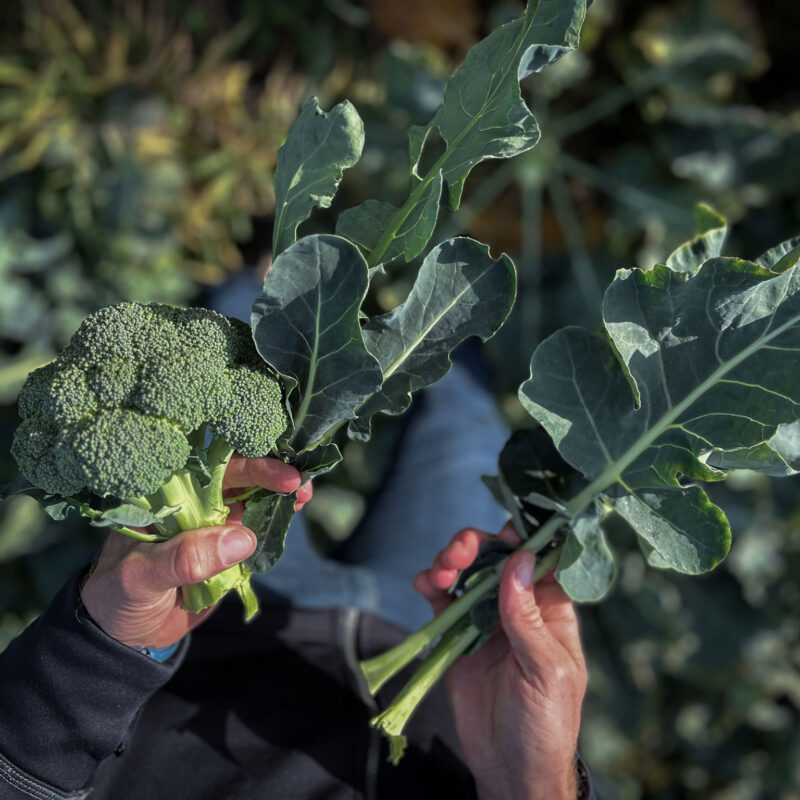Blue Food – Center for the Seafood of the Future
2025.05.19

Blue Food is a national center working to create better conditions for seafood production in Sweden and to increase knowledge about blue food.
As the Blue Food center enters its second four-year phase, Axfoundation is involved both in the steering group and in practical work. The vision of the consortium is to support increased production, value creation, and consumption of innovative, sustainable, and healthy seafood in Sweden.
The initiative is the largest investment in Swedish seafood to date. It brings together actors from across the entire seafood value chain – from primary production in the form of sustainable aquaculture systems and underutilized wild species, to processing, product development, and the production of healthy, Swedish seafood.
The consortium is backed by research and innovation organizations, regional and local governments, NGOs, and a wide range of companies. Axfoundation has been involved since the initiative began in 2021 and is now, during the second four-year phase (2024–2027), also part of the steering group.
Blue Food’s greatest strength is its holistic perspective, bringing together research, innovation, and, crucially, production. It may sound like a cliché, but Blue Food is a fantastic network, and we’ve gained numerous project ideas simply by participating in the annual meetings. One concrete example is the project focused on herring mince.
— Veronica Öhrvik, Project Manager at Axfoundation and member of the Blue Food Steering Group
The center aims to tap into the enormous potential of producing nutritious food from Swedish waters. Through groundbreaking research and co-creation with all stakeholders, the vision is for Blue Food to make Sweden a leading producer of sustainable seafood.
The research will delve into consumer attitudes and the health effects of seafood, as well as the environmental impacts of seafood production and the health and welfare of farmed aquatic animals.
Axfoundation’s role in the center is to contribute expertise and serve as a bridge between primary producers, researchers, and market actors – developing the seafood products of the future in collaboration with these groups.
Blue Food became a reality when the Swedish research council Formas awarded a grant of SEK 48 million for the first four-year period (2021–2024). This was supplemented by additional funding from the Västra Götaland Region and co-financing from the participating partners. For the second four-year period (2025–2028), Blue Food has received an additional SEK 40 million from Formas, again complemented by other funding sources.
Blue Food has set seven impact goals, using 2020 as the baseline:
- Swedish aquaculture is to double by 2030 and increase tenfold by 2040, measured in either volume or value.
- The number of species used in seafood production and consumption is to double by 2030 and increase tenfold by 2040.
- At least 20% (by 2030) and 50% (by 2040) of small-scale pelagic wild-caught fish and seafood by-products should be directed toward food for human consumption rather than animal feed.
- Twenty healthy and sustainably produced seafood innovations should be introduced to the market by 2030, and at least twice that number by 2040.
- Sweden should produce enough seafood for the entire population to follow current dietary recommendations of eating seafood 2 to 3 times per week, while also building resilience in seafood production to withstand potential crises.
- The share of domestically produced seafood consumed in Sweden should increase to 38% by 2030 and to 60% by 2040.
- The number of jobs in the Swedish seafood sector and related industries should increase by 5,000 new jobs by 2030 and 20,000 by 2040.
Blue Food’s Areas of Interest Include:
- Wild-caught and farmed fish
- Extractive species such as algae, mussels, oysters, sea cucumbers, and sea squirts
- Species from saltwater, freshwater, and brackish environments
- Species found in oceans and lakes, as well as those farmed in land-based facilities
- Co-cultivation of species and the health and welfare of farmed organisms
- Interactions with agriculture
- Environmental impact of production on surrounding ecosystems
- Consumer behavior and fears related to unfamiliar foods
- Law, regulations, and policy frameworks
- AI and digitalization
Partners in Blue Food include: KTH Royal Institute of Technology, Chalmers University of Technology, University of Gothenburg, Swedish University of Agricultural Sciences (SLU), Uppsala University, IVL Swedish Environmental Research Institute, RISE Research Institutes of Sweden, Innovatum, Axfoundation, Matfiskodlarna, and Orkla.
Activities and outcomes from the food centers in which Axfoundation participates – Blue Food, PLATE, and PLENTY – will be communicated on an ongoing basis.



























































